TABLE OF CONTENTS
Ever wondered how dual CPU motherboards work and if they’re a worthwhile competitor to mainstream and HEDT motherboards?
Today we’ll dive into that and help you get to the bottom of some interesting questions related to the mythical dual CPU PC.
Let’s get into it!
How Do Dual CPU Motherboards Work?
First, let’s define dual CPU motherboards— or, more accurately, dual socket motherboards.
Dual socket motherboards are (usually) Extended ATX (or non-standard server-) motherboards that have had their layout modified significantly to allow for two CPU sockets, as well as re-arranged (sometimes increased) RAM slots.
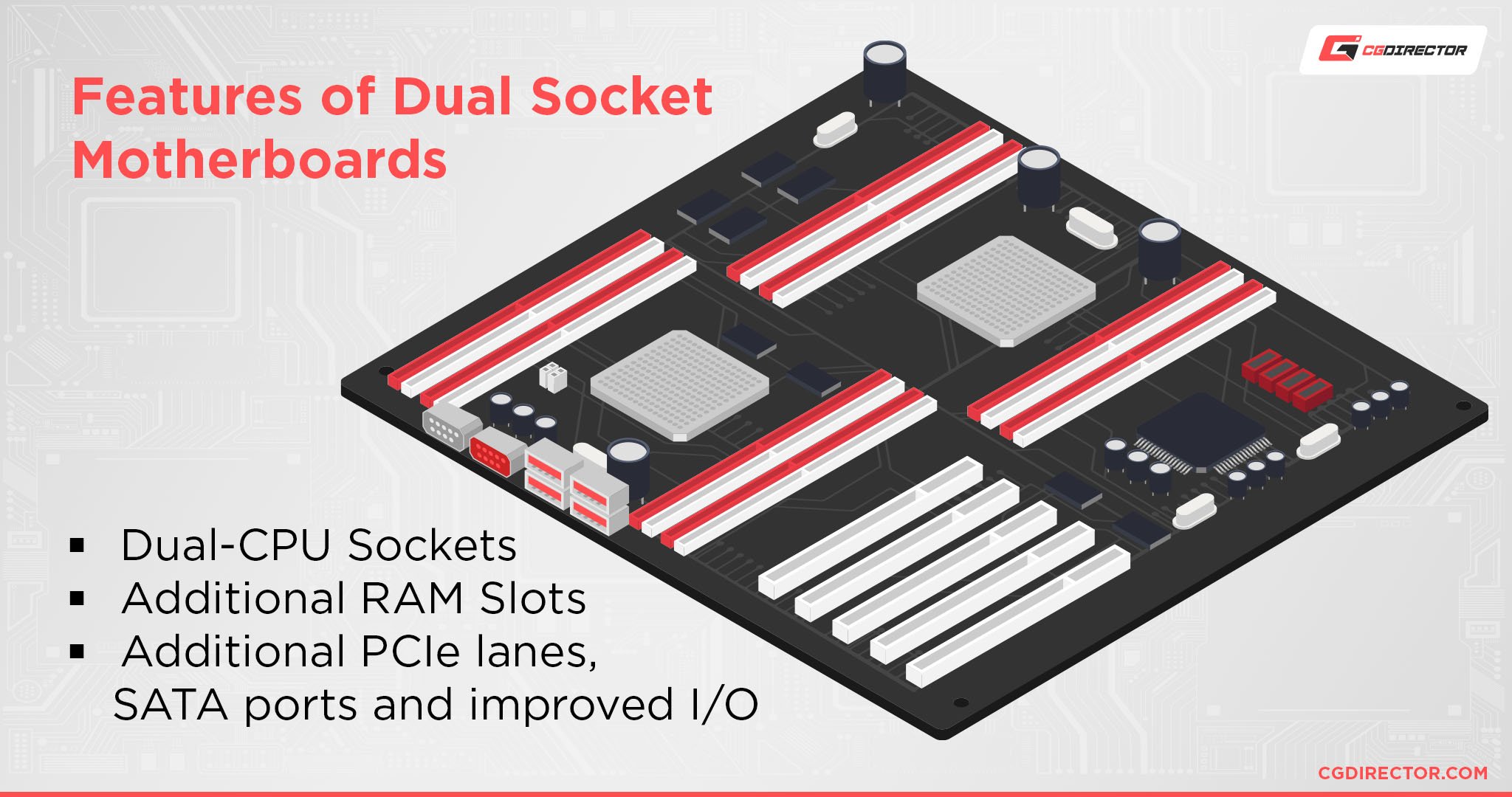
The extreme niche that these boards occupy also means they’re often manufactured by lesser-known companies.
Who Are Dual CPU Motherboards Made For?
Dual socket motherboards are usually manufactured for server usage but can sometimes be repurposed into consumer boards as well.
A surprisingly common use case for dual CPU motherboards is a few generations down the line, where they can be purchased on the used market for cheaper and potentially compete with modern multi-core options at a lower price.
One prominent example of this was covered by GamersNexus last year in the video embedded below:
A GamersNexus review comparing an older dual socket X99 server motherboard setup with two 12-core Intel Xeon CPUs competing against a single, more expensive 12-Core Ryzen 3900X.
In tests like the ones shown above, dual CPU motherboards can serve as surprisingly competitive options with current-gen boards after a few generations pass.
In CPU-based rendering or editing tasks like Blender or Premiere Pro, the dual Xeon E5-2678s remained surprisingly competitive with the Ryzen 9 3900X. Where it faltered, it still didn’t fall behind the Ryzen 5 3600 in most tests.
Gaming seems to suffer on dual-socket motherboards, though, especially minimum FPS numbers. Lower FPS minimums mean more severe FPS dips under heavy load, which makes this a less-than-ideal setup for gaming.
The reason why this happens is due to latency introduced by the engine needing to communicate with two CPUs at once, in addition to much lower single core performance on the Xeons.
So, dual CPU motherboards are definitely targeted at people who have lots of easily parallelizable workloads and who need lots of raw CPU cores to get it done.
Their presence in server spaces is no accident, but they have some legitimate use as workstation motherboards, too, especially if you find them and matching CPUs for the right price.
Apart from doubling Core Counts of the CPUs you also get double the PCIe Lanes, which makes sense for users in need of a lot of high-end PCIe GPUs (e.g. for GPU Rendering or Machine Learning). Since Dual CPU Motherboards are targeted at Server environments, they also come with support for much higher RAM capacities and more Storage.
The above sounds a lot like what we see on current generation HEDT / Workstation-class CPU and Motherboards, though, so let’s talk about HEDT motherboards:
When To Consider HEDT Motherboards Instead
Remember when Intel blamed AMD to have just glued together two CPUs and called it Threadripper? Well, it’s not stupid if it works!
HEDT, or High-End Desktop, refers to motherboard platforms made for enthusiasts and prosumers with exclusive high-core CPUs and top-of-the-line Chipset features. They generally have more PCI Express x16 slots, no built-in video, and more (usually USB) I/O ports.
AMD’s Threadripper Line-up pretty much brings to server AND desktop form factors, what Intel’s Dual CPUs used to do. Albeit in a single-cpu package.
And potentially even doubling that again with dual EPYC CPUs – for those who need it.
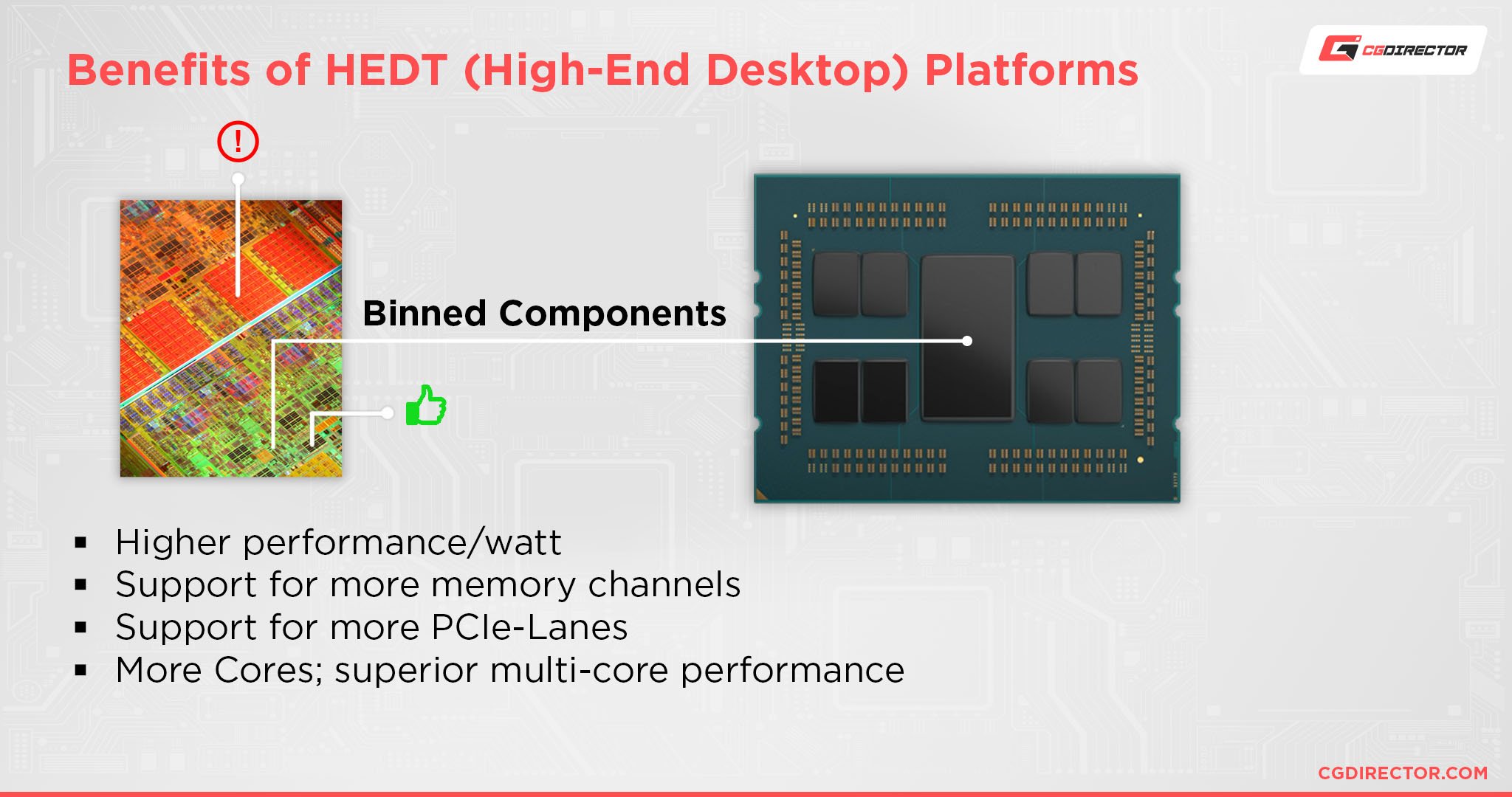
Intel’s HEDT boards are offered alongside their Extreme Edition processors, whereas AMD’s HEDT boards are presented with their Threadripper (Pro) processors.
In either scenario, the purpose remains roughly the same: way more raw multi-threaded power than even high-end Core i9/Ryzen 9 chips can offer.
If you’re paying attention, this might sound an awful lot like the benefits offered by a Dual CPU Motherboard. And you would be right, especially if you’re using older dual socket boards to compete with modern CPUs at a lower price.
The big difference is that HEDT boards and CPUs tend to stay on the higher end of pricing, even after a few generations.
Additionally, HEDT boards will also perform better in workloads like gaming, at least when properly configured.
The best case scenario for gamers will still generally be found in high-end consumer motherboards with Ryzen 9 or Core i9 processors, though, where single-core performance is at its highest.
Otherwise, HEDT and Dual CPU motherboards occupy a fairly similar space in the market, at least used and secondhand markets.
When it comes to enterprises shopping for server hardware, something like a dual CPU motherboard is much more likely than an HEDT board, though.
HEDT boards could very well be used as server motherboards but are generally directed toward individual workstation or enthusiast use.
Both board types and corresponding CPUs see much less frequent revisions than consumer desktop motherboards, though. Additionally, they’re both being pushed hard in the market by modern Core i9 and Ryzen 9 CPUs.
Pros of Dual CPU Motherboards
- For competing with current-gen mid-range CPUs:
- Potential cost savings when buying from secondhand and overseas markets.
- Generally still competitive with modern high-core CPUs for heavily threaded workloads, as long as you aren’t too many generations behind.
- For high-end / server enterprise use:
- Core-Density: When buying modern dual CPU boards, especially in a server context, offers by far the best raw core count and multi-threaded performance. A Datacenter will need just half the space when using Dual-CPU Motherboards while retaining the same amount of cores.
Cons of Dual CPU Motherboards
- Higher power consumption and temperatures
- Definitely not good for gaming or other similarly real-time intensive software; HEDT is the slightly better choice for those workloads and consumer boards are still best overall for gaming.
Dual CPUs seem to introduce more latency to the equation, which hurts real-time applications that are reliant on consistent high CPU performance. - The Process of finding and buying dual CPU motherboards and CPUs is a lot more complicated than with HEDT or consumer boards.
Especially if you’re trying to do it for cost savings, expect to buy from secondhand markets and overseas sellers.
When do Dual CPU Motherboards make sense in a Non-Server Environment?
So to answer the initial question of this article:
When do Dual CPU Motherboards make sense in a Non-Server Environment?
- If you need more Cores than a single CPU can provide and you have space constraints / don’t want to build two PCs.
- If you need more PCIe Lanes than a single CPU can provide and you have space constraints / don’t want to build two PCs.
- If you want to stagger the cost of buying two CPUs (start with one, add a second one later if needed / if budget is available)
- If you need one of the above and want to save the cost of building a second PC (Higher Core-Density in a single PC; No need for a second Case, PSU, Motherboard, Storage, (GPU))
There are Dual CPU Motherboards available (For EPYC and XEON) in ATX and E-ATX that you can install and use inside a regular, compatible PC-Case. All outside of a 19″ Rack that usually needs proprietary and/or non-standardized Motherboard Form Factor and Layout.
Because EPYC and XEON CPUs are extremely expensive compared to consumer, workstation and HEDT CPUs, though, the logical next question that you may want to ask yourself is the following:
Do you need an EPYC or XEON DUAL CPU configuration, or could you build two PCs based on consumer hardware for a fraction of the cost?
Two AMD Threadripper (Pro) 64-Core CPUs with a TRX40 or WRX80 Motherboard, mainstream RAM, will get you the same amount of cores and PCIe Lanes, at a much cheaper price! They are easier to cool, run much quieter, you can add up to 4 dual-slot GPUs into standard E-ATX Cases and a bunch of storage, BUT you’ll have two PCs instead of one, which means you need to split your workload across the network.
In the end, it’s all about core-density and whether you benefit from it or not and are willing to pay premium for it.
FAQ
What’s The Difference Between Server and Desktop CPUs?
Since you’ll most likely be shopping for server CPUs alongside dual CPU motherboards, chances are you want to know a thing or two about server CPUs.
Alex has written a pretty detailed breakdown of Server vs Desktop CPUs already, but I can still give you a few starting tips before heading there.
First and foremost, the main purpose of a server CPU compared to desktop or even HEDT CPUs is having an unholy amount of cores and PCIe Lanes.
Intel Xeons and AMD EPYC chips are even more swole than their Ryzen 9, Core i9, Threadripper, or Extreme Edition counterparts.
As a result of these higher core densities, things like individual core speeds tend to be a little toned down compared to desktop chips.
However, the corresponding boost in distributed/threaded workloads often pays off in professional and enterprise environments.
What are Motherboards Made Of?
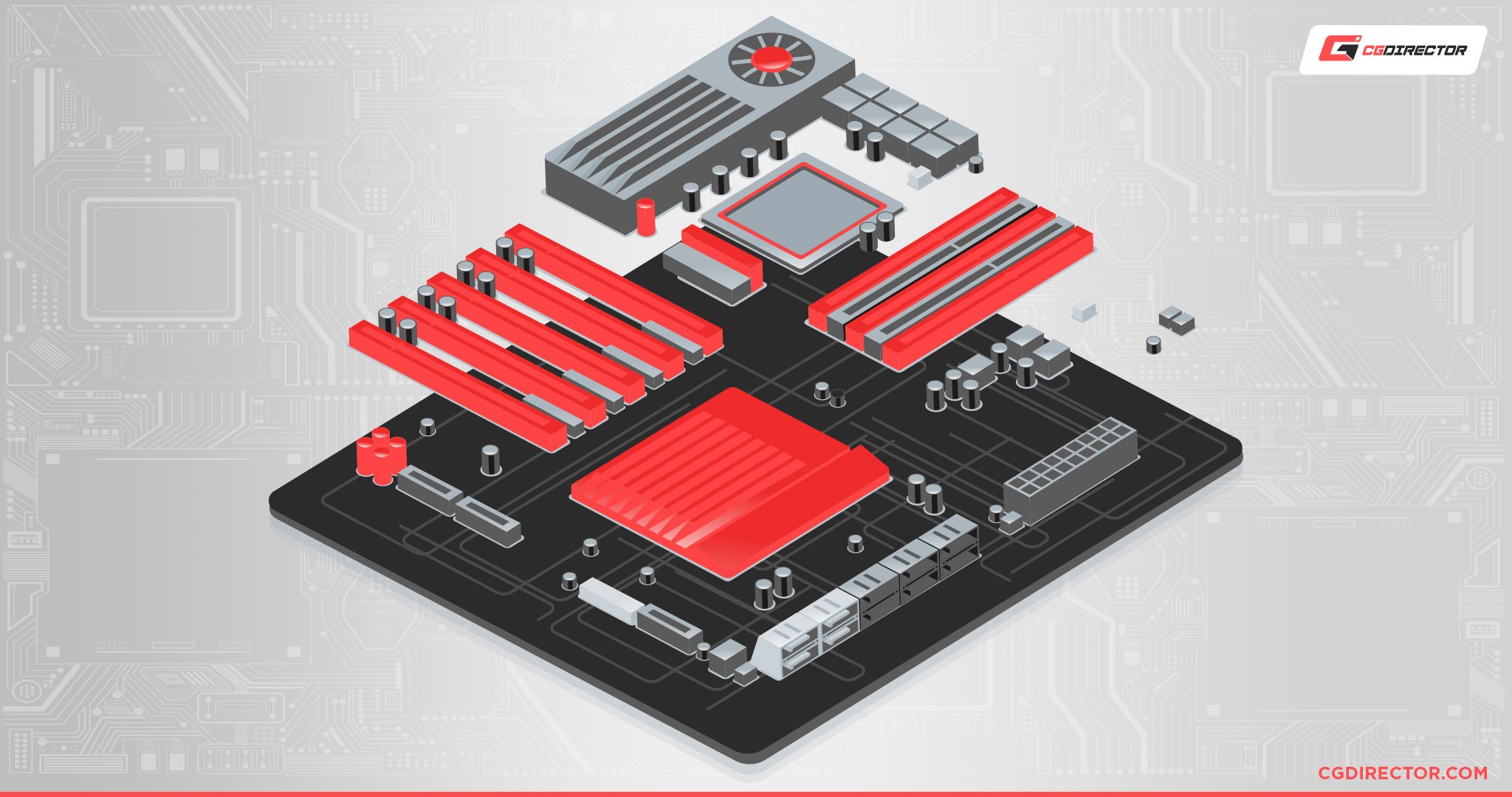
Does this article pique your interest in motherboards and how they work? Consider heading over to my What are Motherboards Made Of Guide, which includes a detailed rundown of every part that goes into a modern motherboard and what it does.
Plus, I’ll also talk about how motherboards are actually assembled, which is a cool little process. Did you know the “Printed” in “Printed Circuit Board” is actually quite literal? I didn’t until I researched and wrote that article.
How Much RAM Do I Need?
If you’re considering a dual socket PC build, especially with server CPUs, you’re gonna want some RAM. You’re probably going to want a lot of it, actually, depending on the specific use case you’re trying to push with your dual CPU motherboard.
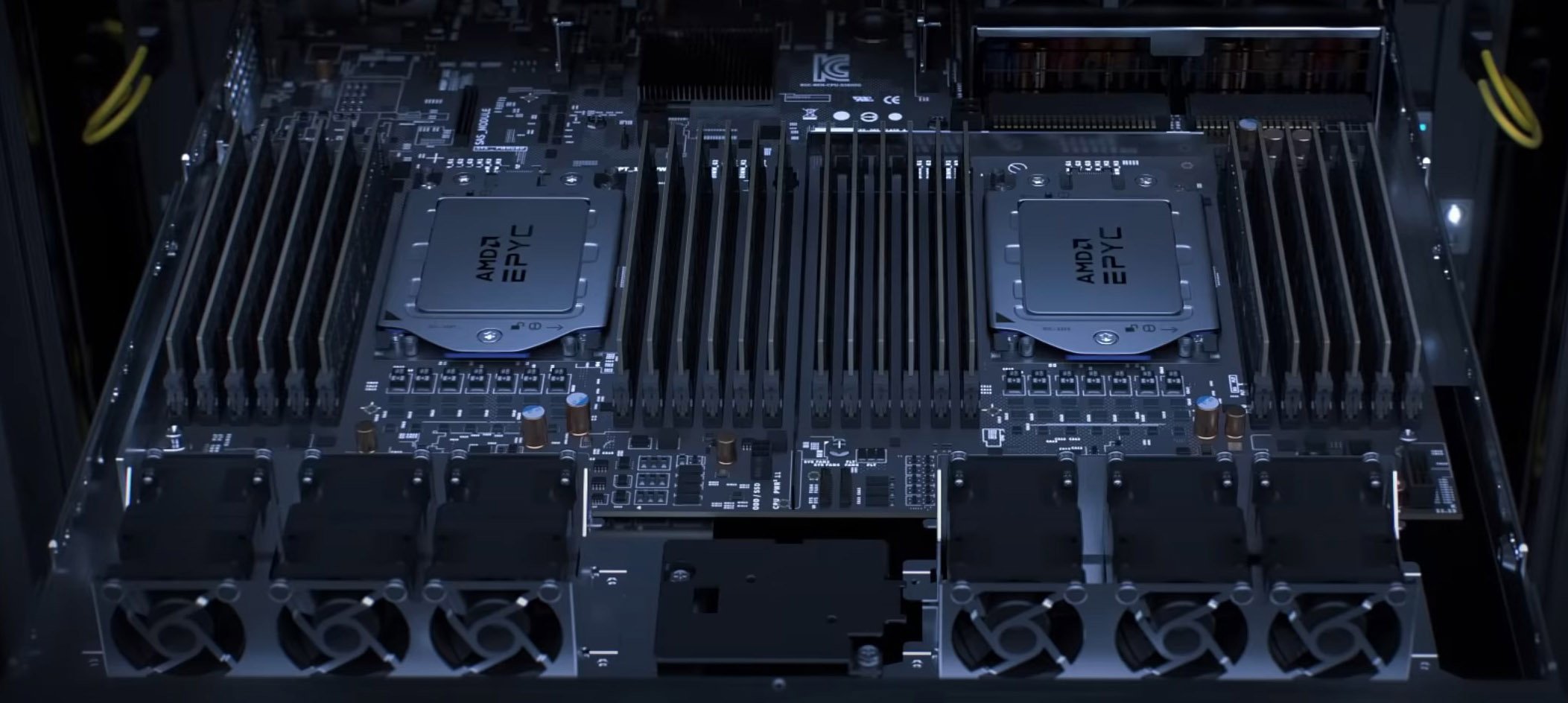
Source: AMD
Alex has already tackled a more extended RAM Capacity Guide if you need it, but I can leave you with a few quick tips for a dual CPU scenario before you go.
First and foremost, try to get at least 4 sticks of RAM, ideally 8. Since you have 2 CPUs, you’ll have to make sure they each have RAM.
Giving them each 2 or 4 sticks of RAM will ensure that they’re running in a Dual or Quad-Channel configuration, which will help increase their bandwidth and performance in scenarios that are bottlenecked by RAM throughput.
Choices past that will largely depend on you, but if you’re getting a dual-CPU motherboard, maxing out your RAM capacity within your budget is most likely a good idea. Put those extra DIMM slots to use!
Over to You
And that’s all, for now! I hope this article taught you a thing or two about dual CPU motherboards and their uses in the market.
At the moment, their place seems to be in either high-end server use or mid-range hobbyist builds with older boards. It’ll be interesting to see if dual CPU boards stick around or see any changes in popularity in the coming years.
At least for people who want to do intensely multi-threaded things like running a render farm, a dual CPU motherboard is always going to make at least a little bit of sense…if the budgetary requirements are within your reach, of course.
What are YOU considering a dual CPU motherboard for? Let us know in the comment section below or head to the Forums with any other questions or concerns you might have about CPU and motherboard technologies.
Until then or until next time, have a good one— and don’t forget to consider HEDT or Core/Ryzen 9 if you can’t find a use for 64+ cores!
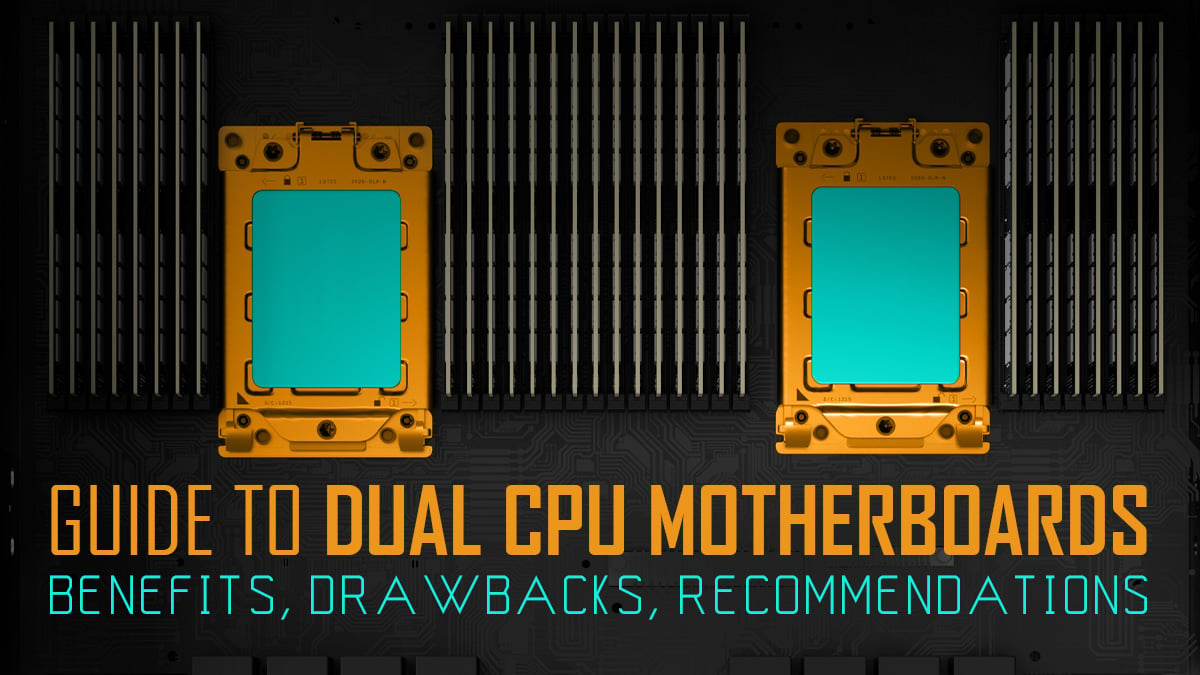
![Where Do You Connect PC Fan PWM Cables To? [Beginner’s Guide] Where Do You Connect PC Fan PWM Cables To? [Beginner’s Guide]](https://www.cgdirector.com/wp-content/uploads/media/2023/12/Where-Do-PWM-Cables-Go-Beginners-Guide-Twitter-1-594x335.jpg)
![How To Connect Front Panel Cables To Your Motherboard [Guide] How To Connect Front Panel Cables To Your Motherboard [Guide]](https://www.cgdirector.com/wp-content/uploads/media/2024/01/How-To-Connect-Front-Panel-Cables-To-Your-Motherboard-Twitter-copy-1-594x335.jpg)
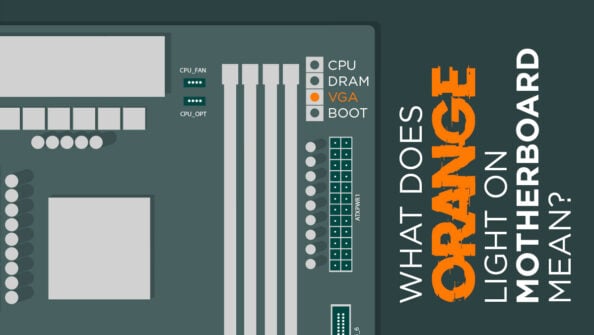
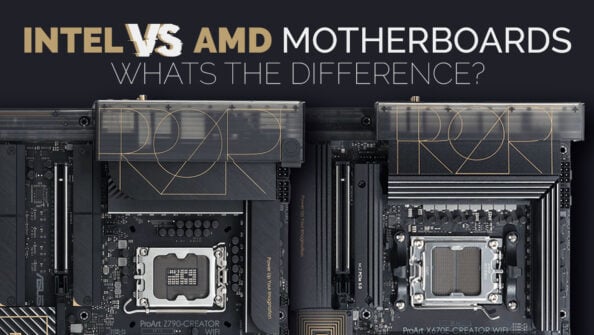

5 Comments
22 November, 2024
Great article! Thank you. I’m building an AI workstation and want support for minimum of 4 pcie slots GEN4 x16 lanes. Mostly planning to use it for inference, and combining the GPU memory to get to larger models. Want the most bandwidth, since eventually will get to training/fine-tuning and that will be more data intensive. I’m looking at a dual-CPU Gigabyte MZ72-HB0 Motherboard, with 2 AMD EPYC Rome 24-CORE 7402 3.35GHZ processors.
Learned a lot about why big-box store “gaming machines” are so cheap. They have ONE x16 slot, and the others are usually x1. Great for a single-GPU and gaming, but not so good if you want multiple GPUs with at least x8 lanes.
Your article helped confirm I’m headed down the right path for what I want to do. Massively parallel, lots of cores, and plenty of fat x16 or x8 lanes to support all the GPUs equally.
22 April, 2023
“At least for people who want to do intensely multi-threaded things like running a render farm, a dual CPU motherboard is always going to make at least a little bit of sense…if the budgetary requirements are within your reach, of course.“
I am looking into building a render farm for Blender on a tight budget. Can you elaborate on what you mean by a “little” bit of sense.
Also can multiple GPUs in a dual CPU configuration be utilized for both CPU and GPU rendering with Blender
Thanks
25 April, 2023
Hey Guy,
By a little bit of sense, we mean it would certainly make sense, since CPU Render Engines benefit greatly from added cores. Double the cores with 2 CPUs, therefore, would certainly be great!
The thing is. You have to look at total cost of ownership. So is it cheaper to buy one dual CPU motherboard and PC or cheaper to buy two PCs with 1 CPU each? Well very often it’s much cheaper to get a Threadripper 64 Core and a workstation single CPU motherboard, than a dual CPU server motherboard and two epycs or Xeons. So that’s something to keep in mind. Other things to consider is power draw, and available space, and noise.
If you want to do Blender Rendering in Cycles for example I’d actually recommend going the GPU-only route. GPU (CUDA / OptiX) is a LOT faster than CPU Rendering in Cycles, and you can add/stack a lot more GPUs than you can add CPUs to a system.
With a Threadripper motherboard you can easily add 4x dual-slot GPUs, or if you use riser cables and a mining case, can attach even up to 4 quad-slot GPUs (e.g. RTX 4090) to that single PC. That’ll be a lot faster than dual-CPU rendering.
The question of doing hybrid rendering or GPU-only: I usually stay clear from hybrid rendering unless you’re using a single GPU only and have a high clocking CPU. Reason is, because GPU rendering (especially on multiple GPUs) also requires a lot of CPU and RAM resources. Taking those resources away to do hybrid rendering, may slow down your render more than just using GPU-only. Also, the computer becomes quite unresponsive when doing hybrid rendering on heavy scenes.
Another reason: For active workstation use (viewport, modeling, animation etc.) you need a high clocking mainstream CPU. For high-end CPU rendering you would need a CPU with lots of cores (e.g. Threadripper 3990X, 5995WX 64 core etc). Such workstation CPUs have bad single core performance though, and are not recommended for active work.
Hope this helps,
Alex
24 August, 2022
Amazing, thanks for such an informative article
24 August, 2022
You are very welcome, Ellen. Glad you liked it! Let me know of any questions you might have 🙂
Cheers,
Alex